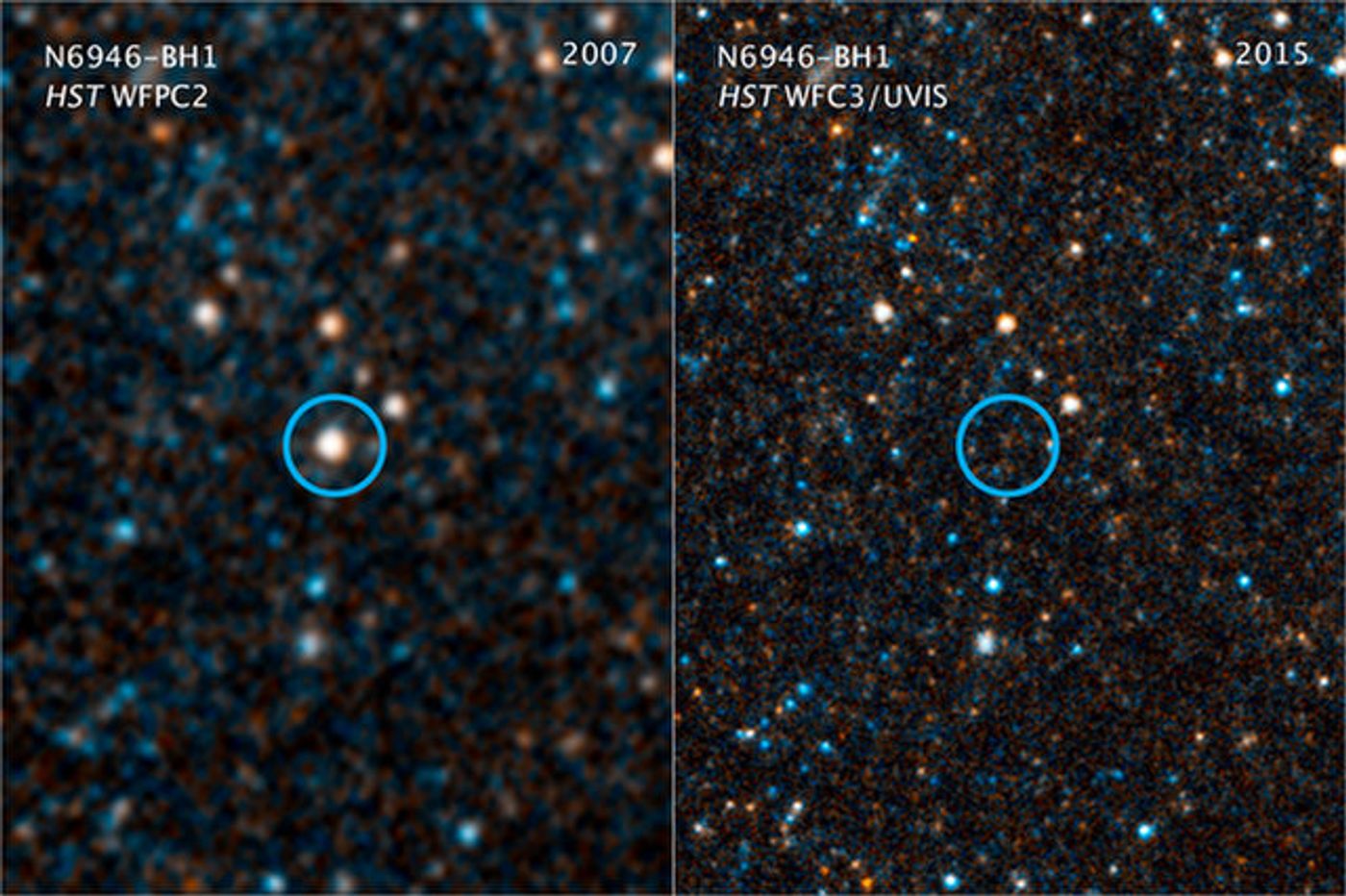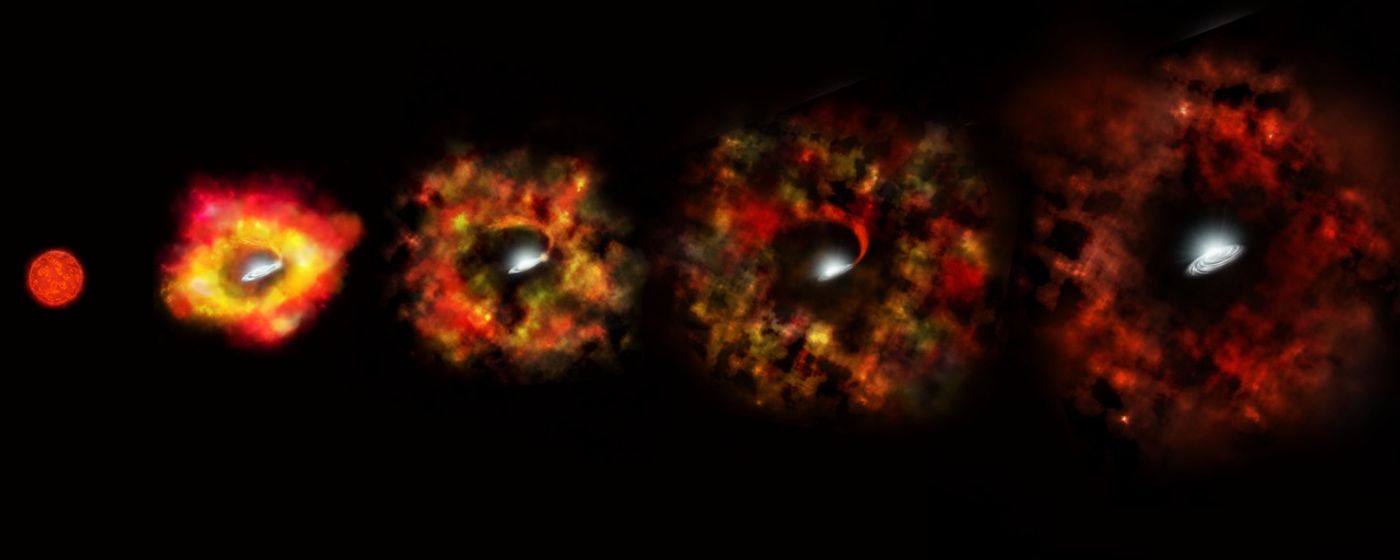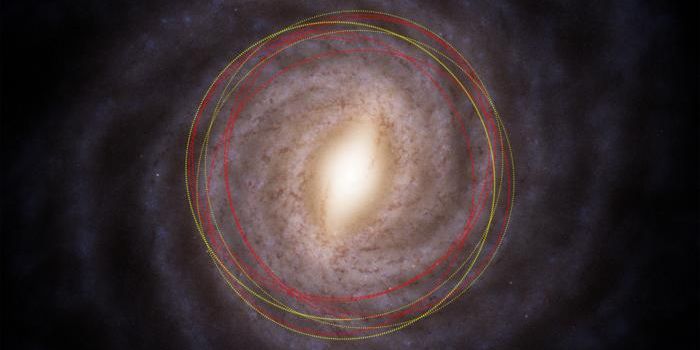Our First Glimpse At a Failed Supernova?
Astronomers are stumped by the unexplained Houdini act of what was once a distant star dubbed N6946-BH1. Originally found around 22 million light years away and measuring in at approximately 25 times that of our Sun, it was seen as a bright orb of light in the middle of a star cluster image captured by the Hubble Space Telescope back in 2007.
Image Credit: NASA, ESA, and C. Kochanek (OSU)
While keeping an eye on it over the years, they discovered its luminosity was starting to increase to a peak point in 2009. This gave rise to the idea that it might have been a supernova, but then some strange things started to happen – the luminosity dissipated and the star was never seen again.
Related: Scientists have observed shockwaves from a supernova for the first time
The team of astronomers looked back on location of the star in 2015 with the exact same telescope calibration settings that were used back in 2007 to see the star could be found, and the reexamination revealed that the star was missing.
To ensure something like a stellar dust cloud wasn’t getting in the way and concealing it from sight, the team turned to NASA’s Spitzer Space Telescope, which could take infrared readings rather than visible light readings; again, however, all they found was a dimming source of light that was far fainter than you would expect from a star being shrouded by dust.
A new study published in the Monthly Notices of the Royal Astronomical Society seems to be suggesting that perhaps this phenomenon was a result of a ‘failed supernova,’ something that has never before been captured in the moment.
In this case, the star expels its outer layers just like a supernova does, but it does so in a far subtler way without the violent and bright explosion we generally see in a supernova. Afterwards, everything gravitationally collapses in on itself. This would explain why the object got so large and luminous for a short time before finally dissipating from view.
Image Credit: P. Jeffries (STScl)/NASA/ESA
The weakening luminosity is believed to be caused by the formation of a black hole, which means all the light and hot glowing material was getting sucked in by the immense gravity surrounding the black hole.
Related: This is how a black hole is made
While the existence of a black hole isn’t confirmed yet, the team now plans to turn to the Chandra X-Ray Observatory, which should once and for all reveal whether or not a black hole was created by the event by measuring X-Rays that would be getting emitted by hot gasses falling into the black hole.
Related: This is what it looks like when a black hole burps gasses
In addition to this endeavor, the team is interested in using the upcoming James Webb Space Telescope to gaze upon the region and see what other kinds of things might be happening where this star used to be.
For what it’s worth, we don’t see as many supernovae as we expect to see, and perhaps this is the reason why. It seems, from this study, that perhaps it’s possible for black holes to form without a star going ‘full supernova.’
“The typical view is that a star can form a black hole only after it goes supernova,” said Ohio State University astronomy professor Christopher Kochanek, a co-author of the study. “If a star can fall short of a supernova and still make a black hole, that would help to explain why we don’t see supernovae from the most massive stars.”
This has the potential to be a huge Eueka! moment, as we’ve never before observed a failed supernova, nor have we ever had the chance to officially confirm that black holes can occur without them. Perhaps this is happening more often than we know and we just aren't aware of it yet.
Related: Soon, we'll get to see the world's first real image of what a black hole looks like
Additional research into what’s going on with N6946-BH1 might just hold some clues into the next chapter of understanding astronomy and astrophysics.
Source: Ohio State University, Space.com










